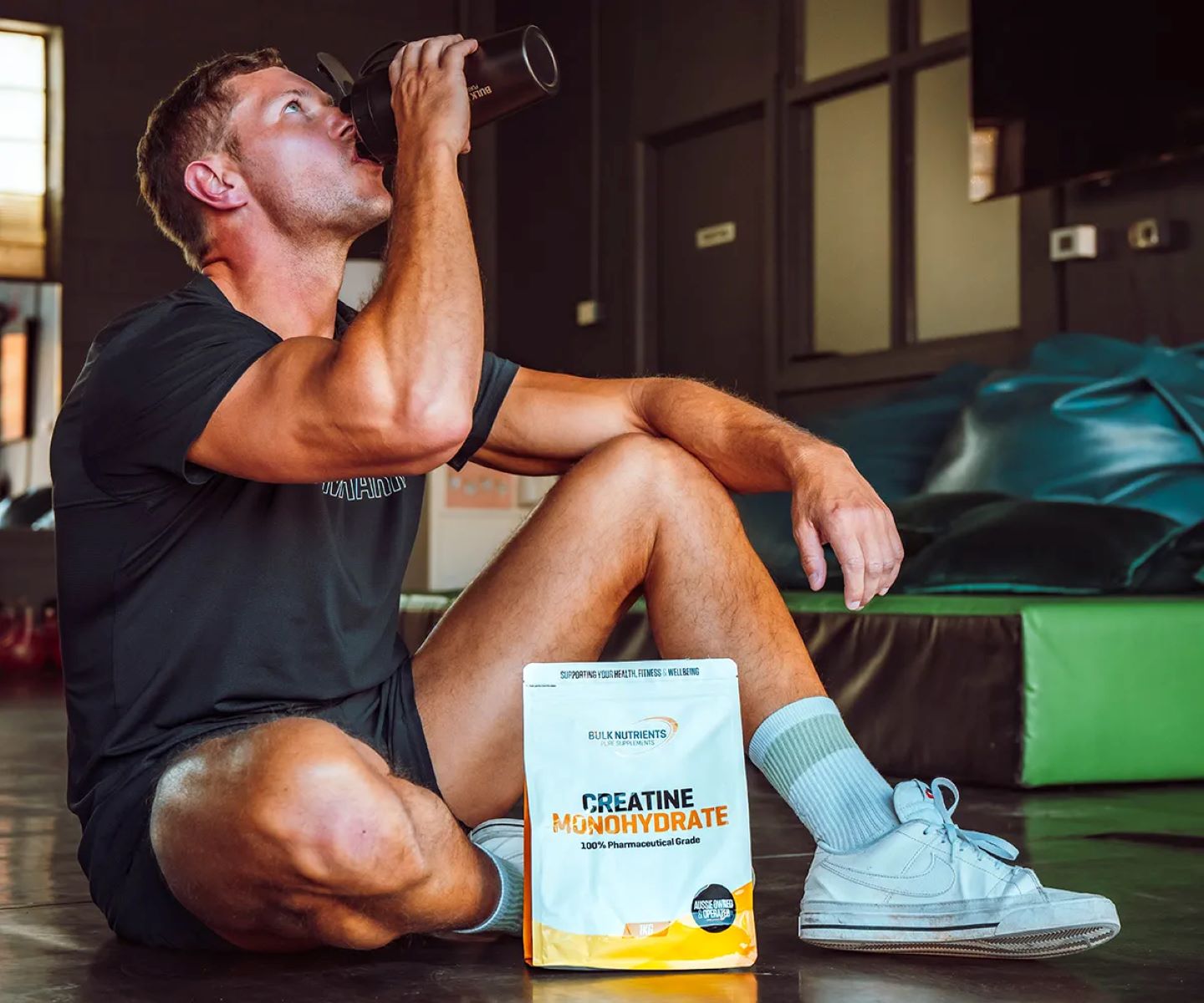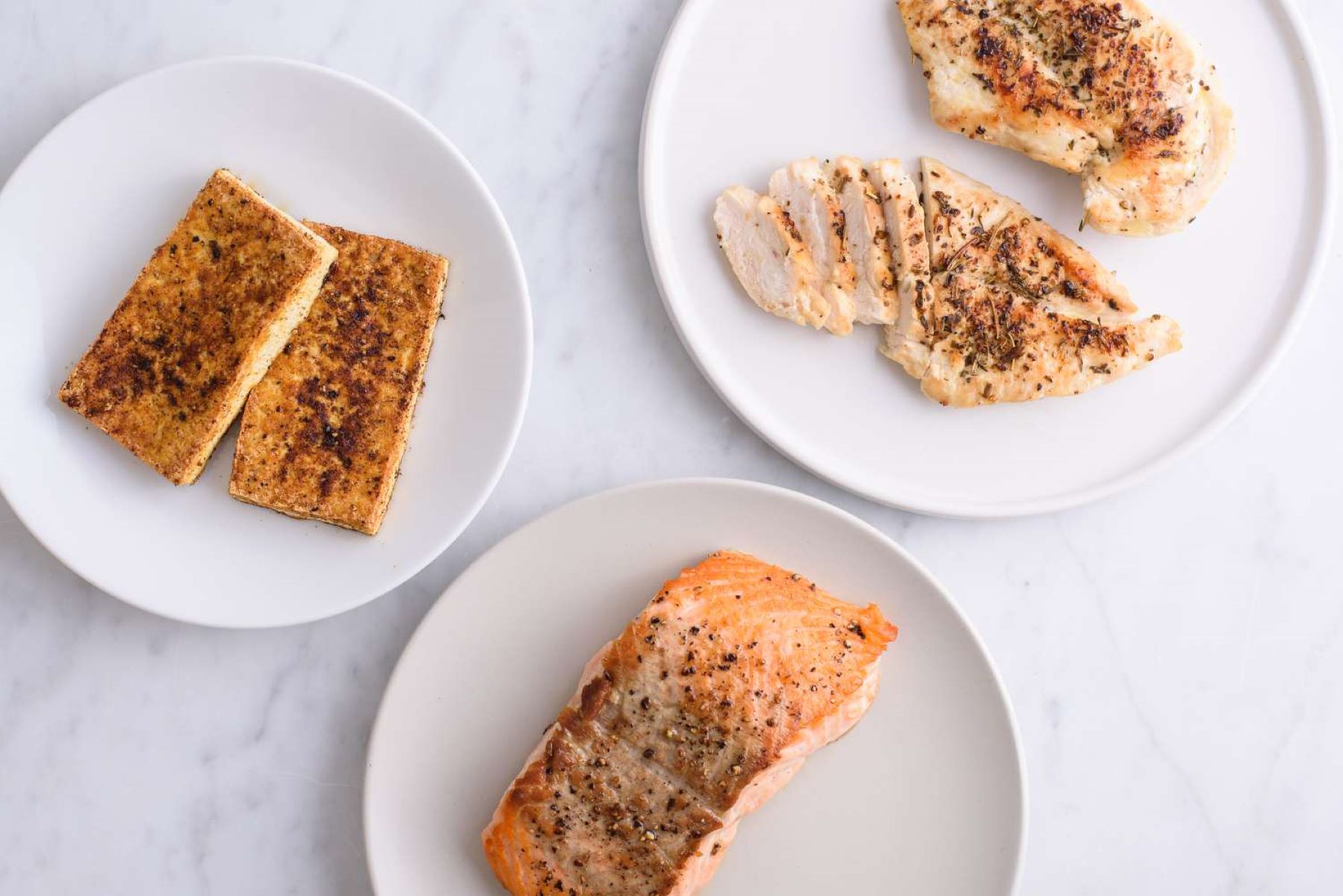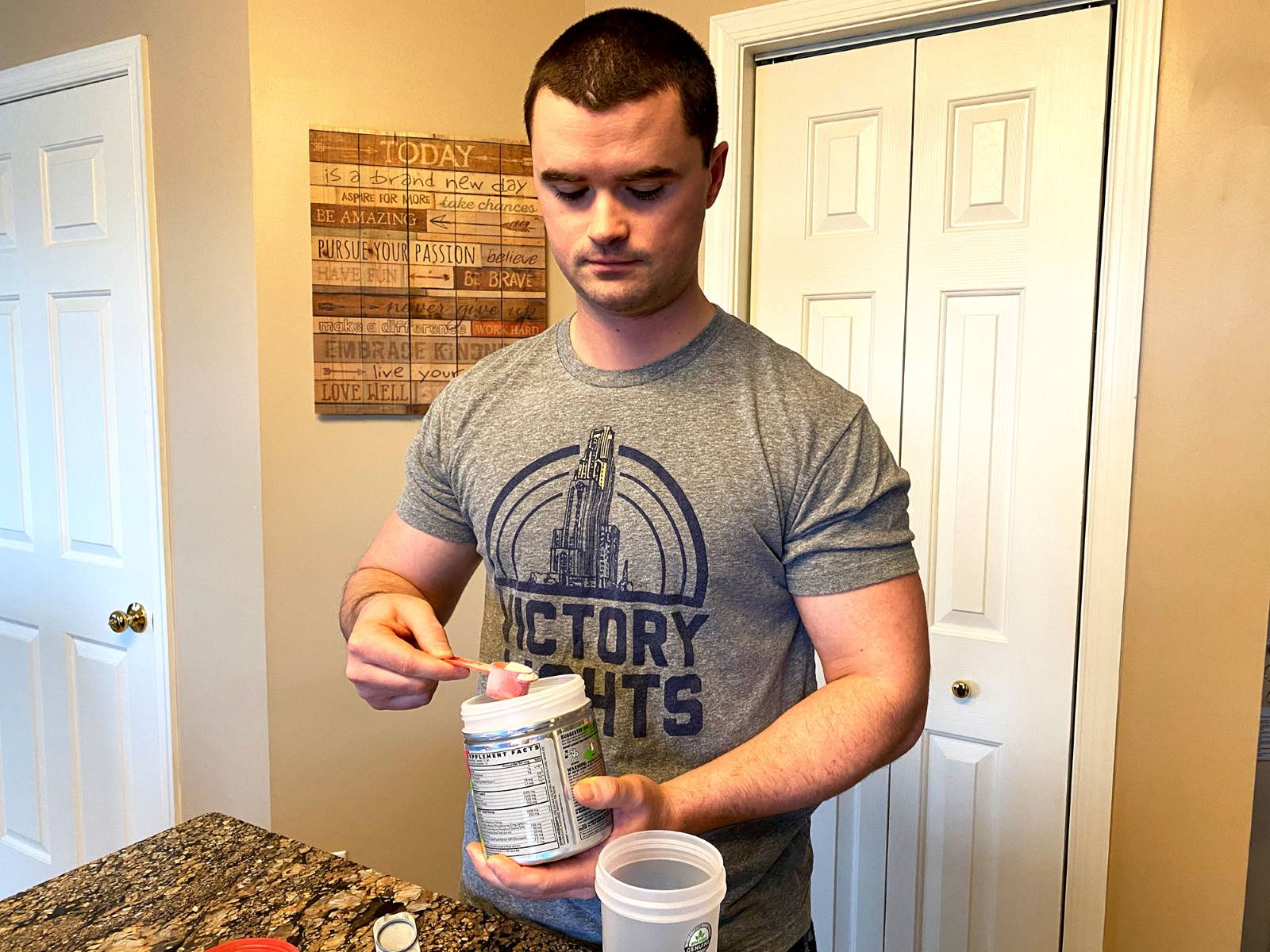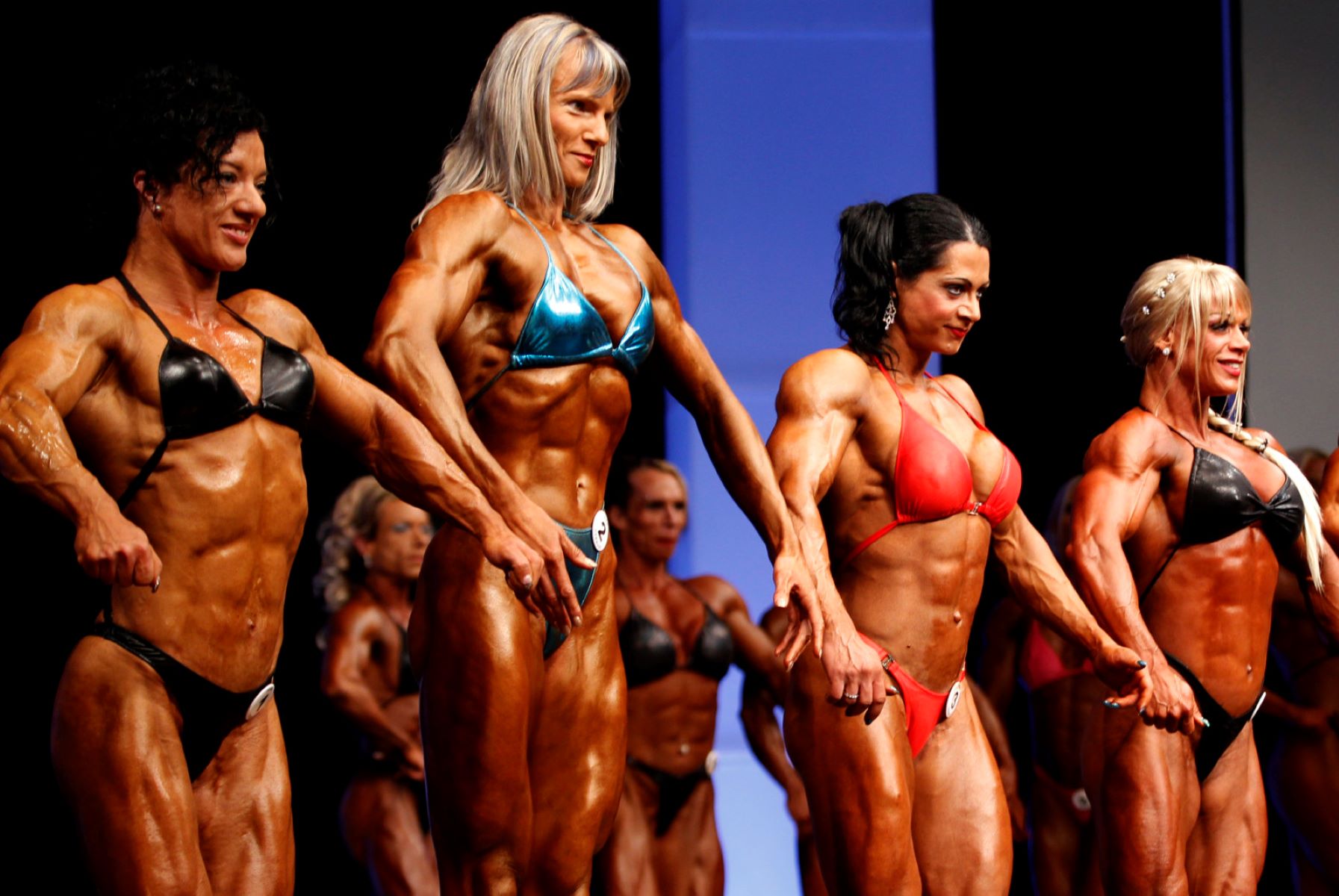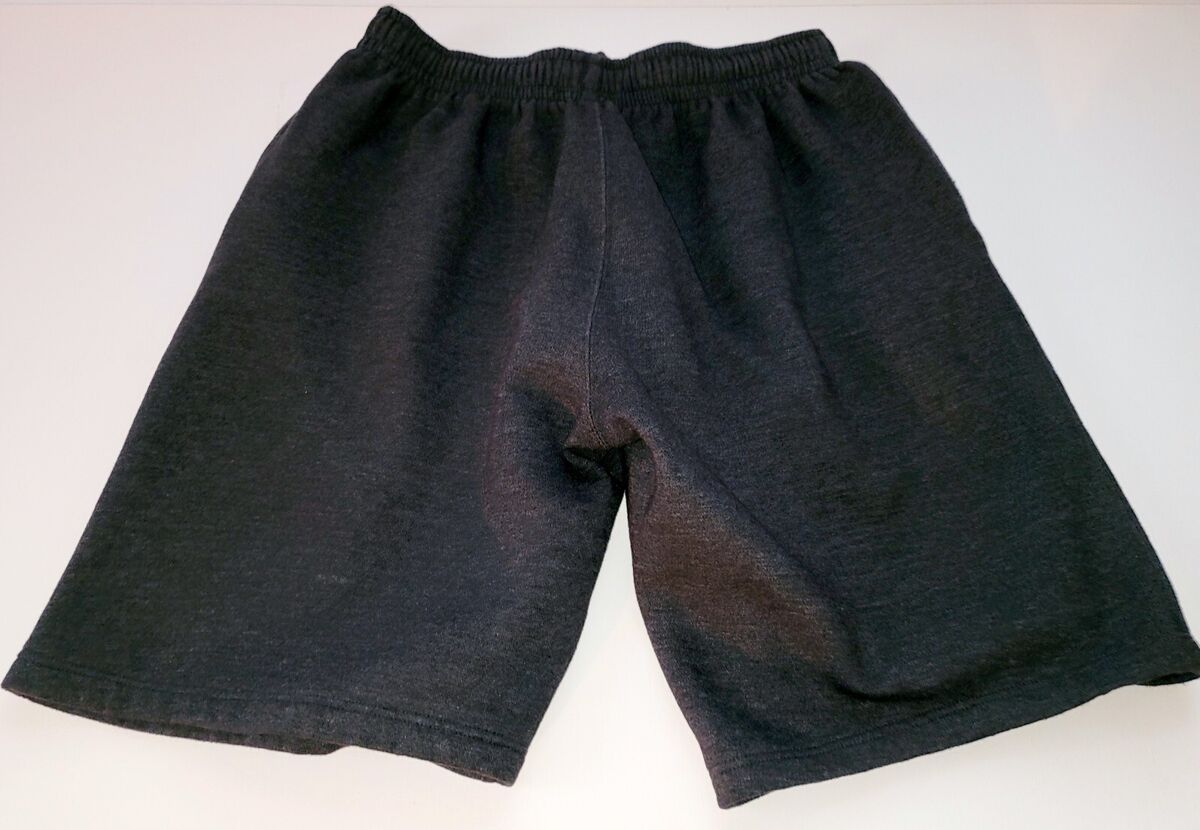Home>Misc>Featured>How Many Hours A Day Do Bodybuilders Workout
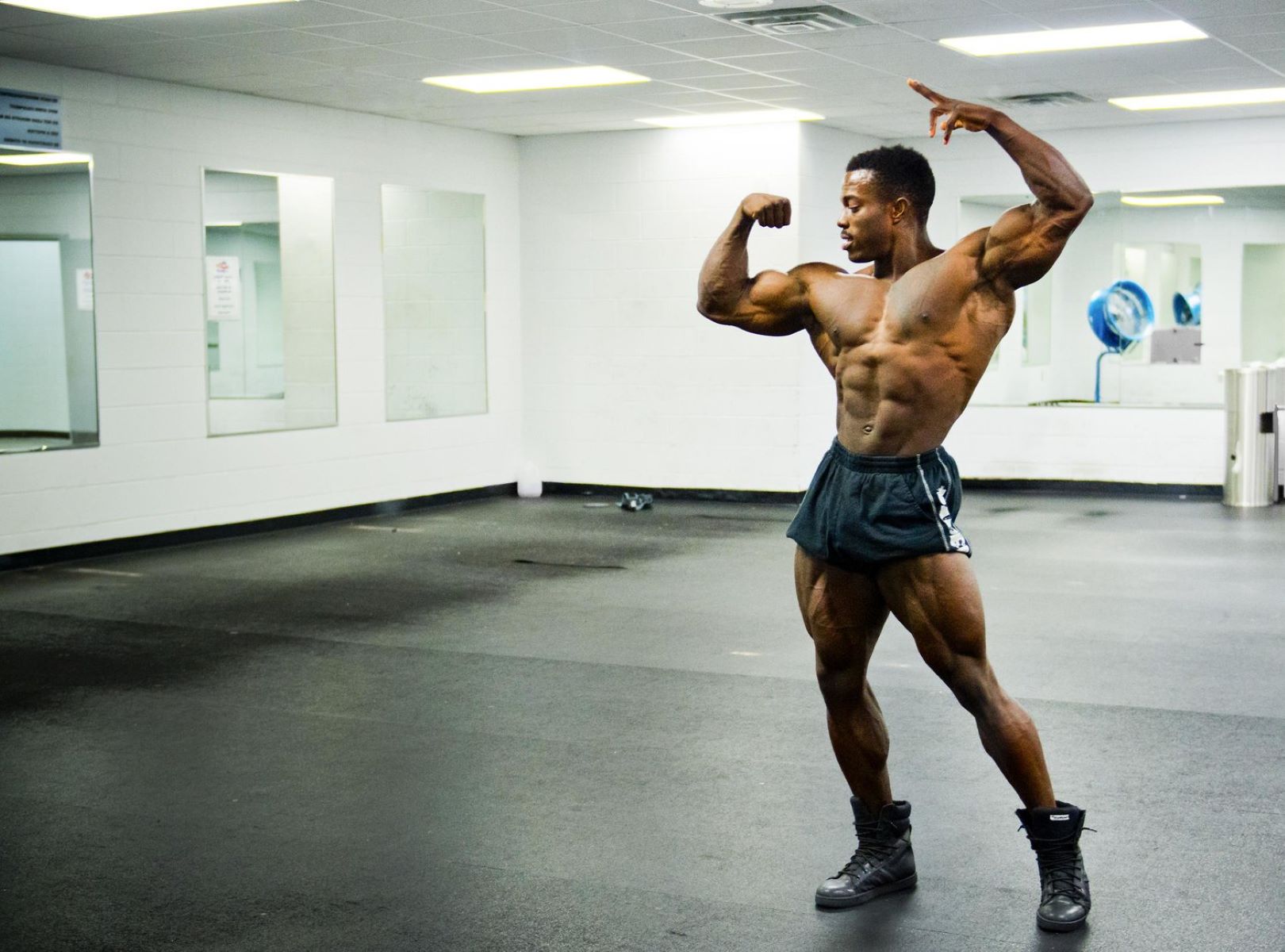

Featured
How Many Hours A Day Do Bodybuilders Workout
Modified: January 2, 2024
Discover the top bodybuilders and their daily workout routines. Get insights into how many hours a day featured bodybuilders dedicate to their training regimen.
Introduction
Bodybuilding is a discipline that focuses on building and sculpting the muscles of the body through a combination of intense weightlifting, proper nutrition, and strategic training techniques. It is a popular fitness pursuit for those looking to increase strength, improve physique, and enhance overall health and well-being.
One of the common questions that frequently arises in the realm of bodybuilding is how many hours a day bodybuilders spend in the gym. While there is no definitive answer to this question, it is important to understand that the duration of a bodybuilder’s workout can vary depending on several factors. These factors include the individual’s goals, fitness level, training experience, and personal preferences.
Bodybuilding offers a multitude of benefits beyond just physical appearance. It promotes increased muscle density, improved bone health, enhanced metabolism, reduced risk of chronic diseases, and increased mental toughness. Additionally, bodybuilding can boost self-confidence and improve overall quality of life.
However, it is crucial to strike the right balance between training intensity and recovery, to avoid overtraining and potential injuries. Finding the optimal workout duration for bodybuilders is essential for achieving maximum results while minimizing the risk of burnout or plateauing.
In this article, we will explore the factors that determine workout duration, the ideal workout duration for bodybuilders, variations in training splits, the frequency of workouts, the importance of rest days, and the overall importance of balancing quality and quantity of workouts. By understanding these factors, bodybuilders can customize their training routines to meet their specific needs and goals.
Benefits of Bodybuilding
Bodybuilding offers a wide range of physical, mental, and emotional benefits that go beyond achieving a chiseled physique. Here are some of the key benefits:
1. Increased Muscle Mass: Bodybuilding is focused on building and strengthening muscles. With consistent and progressive resistance training, bodybuilders can experience significant gains in muscle mass. This increased muscle mass not only improves physical strength but also enhances overall body composition.
2. Improved Strength and Power: Regular weightlifting and resistance training in bodybuilding help to improve strength and power. This increase in muscular strength is not only beneficial inside the gym but also translates into daily activities and sports performance.
3. Enhanced Metabolism: Building muscle through bodybuilding can lead to an increase in basal metabolic rate (BMR). This means that the body burns more calories at rest, even when not engaged in physical activity. As a result, bodybuilders have an easier time maintaining a healthy weight and reducing the risk of obesity.
4. Bone Health: Bodybuilding involves weight-bearing exercises, such as squats and deadlifts, which are beneficial for bone density. Regular resistance training helps to improve bone health and reduce the risk of osteoporosis, especially in older individuals.
5. Increased Mental Discipline: Bodybuilding requires a high level of focus, commitment, and discipline. The journey to achieve specific goals, such as gaining strength or sculpting the perfect physique, teaches individuals to stay motivated and disciplined. This mental discipline can be applied to various aspects of life, leading to improved productivity and success.
6. Improved Self-Confidence: Seeing visible progress in muscle growth and overall physique can significantly boost self-confidence. Bodybuilders feel a sense of accomplishment when they achieve their desired physique and set new goals. This newfound confidence often extends to other areas of life, resulting in improved relationships, career success, and personal growth.
7. Health Benefits: Bodybuilding has numerous health benefits. Regular exercise and weightlifting improve cardiovascular health, lower blood pressure, reduce the risk of chronic diseases such as heart disease and diabetes, and enhance overall immune function.
Overall, bodybuilding is a holistic approach to fitness and well-being. It not only improves physical appearance but also promotes overall health, mental resilience, and self-confidence. The benefits of bodybuilding go far beyond the gym, creating a positive impact on various aspects of an individual’s life.
Factors That Determine Workout Duration
The duration of a bodybuilding workout can vary depending on several factors. Understanding these factors is crucial in determining the optimal workout duration for individual bodybuilders. Here are some key factors that influence workout duration:
1. Goals: The specific goals that a bodybuilder has will heavily influence the duration of their workouts. Bodybuilders who are aiming to build muscle mass and strength may require longer workout sessions compared to those focusing on maintenance or fat loss.
2. Fitness Level: The fitness level of a bodybuilder plays a role in determining their workout duration. Beginners may need more time to learn proper form, technique, and to build endurance, while advanced bodybuilders may have shorter but more intense workouts.
3. Training Experience: Experience in bodybuilding can contribute to the efficiency of workouts. A more experienced bodybuilder may be able to achieve the desired results in a shorter workout duration due to improved technique and muscle memory.
4. Available Time: The amount of time a bodybuilder can dedicate to their workouts also influences the duration. Some individuals may have more time flexibility and can engage in longer sessions, while others may need to fit their workouts into shorter time slots.
5. Recovery Ability: Each person has a unique recovery ability, and this will determine how long their workout duration can be. Overtraining can lead to burnout and hinder progress, so it is important to listen to the body and give it adequate rest.
6. Training Intensity: The intensity of the workout is a significant factor. A high-intensity workout with shorter rest periods may require a shorter overall duration, while a lower-intensity workout or focusing on strength training may require longer rest periods and thus a longer duration.
7. Personal Preferences: Lastly, personal preferences and enjoyment of certain exercises or training styles will influence the duration of workouts. Enjoying a specific training method may lead to longer workouts, as individuals may want to spend more time engaging in activities they love.
It is important to note that there is no one-size-fits-all approach when it comes to workout duration in bodybuilding. Individuals must find what works best for their specific goals, fitness level, time constraints, and recovery ability. Balancing these factors is crucial for achieving optimal results while avoiding overtraining and burnout.
Ideal Workout Duration for Bodybuilders
The ideal workout duration for bodybuilders can vary depending on individual factors and goals. While there is no definitive answer, there are some general guidelines to consider. It is important to note that these are rough estimates and can be adjusted based on personal preferences and individual needs.
1. Resistance Training: The core component of bodybuilding is resistance training, which involves lifting weights to build muscle. Typically, bodybuilders spend around 45 minutes to 90 minutes on resistance training per session. This duration allows for an adequate number of exercises and sets to target different muscle groups effectively.
2. Warm-up and Cool-down: Before and after the resistance training session, it is essential to allocate time for a proper warm-up and cool-down. This can include dynamic stretching, mobility exercises, and light cardiovascular activity. Aim for 10-15 minutes for both warm-up and cool-down to prepare the body and prevent injuries.
3. Cardiovascular Exercise: Cardiovascular exercise, such as running or cycling, is often incorporated into a bodybuilder’s routine to improve cardiovascular fitness and aid in fat loss. The duration of cardio exercise can vary depending on the individual’s goals and fitness level. Typically, 20-30 minutes of moderate-intensity cardio, done 2-3 times per week, is sufficient for most bodybuilders.
4. Rest Periods: The length of rest periods between sets also affects the total workout duration. Shorter rest periods (30-60 seconds) can increase the intensity and efficiency of the workout, allowing for shorter overall durations. However, if strength or heavier lifting is the focus, longer rest periods (2-3 minutes) may be necessary.
5. Frequency: The frequency of workouts is another consideration. Typically, bodybuilders train individual muscle groups 2-3 times per week, allowing for adequate recovery and muscle growth. The duration of each workout can be adjusted based on the number of training days per week.
It is important to remember that quality and intensity of the workout take precedence over duration. Instead of focusing solely on the clock, bodybuilders should concentrate on proper form, progressive overload, and challenging the muscles effectively. A well-structured and balanced workout program will yield better results than a prolonged but inefficient session.
Listening to the body and understanding its limits is crucial. If fatigue or lack of focus sets in during a workout, it may indicate the need for a shorter session. On the other hand, if energy levels are high and progress is consistent, longer workouts may be appropriate.
Ultimately, the ideal workout duration for bodybuilders is unique to each individual. It should be tailored to personal goals, fitness level, recovery ability, and preferences. The key is to find a duration that allows for effective training while avoiding overexertion and burnout.
Variations in Training Splits
When it comes to bodybuilding, training splits refer to how workouts are structured to target different muscle groups on different days. There are several variations in training splits, each with its own advantages and considerations. Here are some common training splits used by bodybuilders:
1. Full-Body Workouts: Full-body workouts involve training all major muscle groups in a single session. This type of training split is ideal for beginners or individuals with limited time. It allows for a higher frequency of training each muscle group and ensures a well-rounded approach to building overall strength and muscle mass.
2. Upper/Lower Split: The upper/lower split involves dividing workouts into upper-body and lower-body training sessions. This split allows for greater focus and intensity on specific muscle groups. Typically, workouts are structured as upper-body exercises on one day and lower-body exercises on another day, with rest days in between.
3. Push/Pull/Legs Split: The push/pull/legs split involves grouping exercises based on the movement patterns involved. On push days, exercises that involve pushing movements, such as bench press and shoulder press, are performed. Pull days focus on exercises like pull-ups and rows, which involve pulling motions. Leg days target lower-body exercises such as squats and lunges.
4. Body Part Split: Body part splits involve dedicating specific days to training particular muscle groups. For example, one day may be focused on chest and triceps, another on back and biceps, and so on. This split allows for greater focus and volume on each muscle group, which can be beneficial for advanced bodybuilders seeking to target specific areas.
5. Hybrid Splits: Hybrid splits combine elements of different training splits to create a customized approach. This allows bodybuilders to target specific muscle groups while still maintaining overall balance and variety in their workouts. An example of a hybrid split could be combining upper/lower split with a push/pull/legs split.
Choosing the right training split depends on factors such as workout schedule, personal preferences, recovery ability, and specific goals. Advanced bodybuilders often experiment with different training splits to prevent plateaus and keep the body challenged. It is important to note that while training splits help structure workouts, the overall training program should still emphasize progressive overload and proper form.
It is also essential to include rest days in any training split. Rest days allow for recovery and muscle repair, preventing overtraining and reducing the risk of injuries. Finding the right balance between training volume and recovery is crucial for long-term progress and optimal results.
In summary, there are various training split options in bodybuilding, each with its own set of advantages and considerations. The choice of training split should align with individual goals, time availability, recovery ability, and personal preferences. Experimenting with different splits can help bodybuilders find the best approach for their specific needs.
Frequency of Workouts for Bodybuilders
The frequency of workouts, or how often bodybuilders train, plays a crucial role in achieving optimal results. Finding the right balance between training and recovery is essential for muscle growth, strength gains, and overall progress. Here are some factors to consider when determining the frequency of workouts:
1. Training Split: The choice of training split is closely related to workout frequency. Depending on the training split, bodybuilders may train all muscle groups in a single session (full-body workouts) or dedicate specific days to target different muscle groups (body part splits). The frequency of workouts will vary accordingly.
2. Training Intensity and Volume: The intensity and volume of each workout session also impact frequency. Higher-intensity workouts with greater volume may require more recovery time between sessions. Bodybuilders need to listen to their bodies and ensure proper rest and recovery to avoid overtraining.
3. Experience Level: Beginners may require more frequent workouts to build a foundation of strength and muscle. As individuals become more experienced, they may be able to handle higher training frequencies and more intense workouts. However, it is still important to listen to the body and avoid pushing beyond its limits.
4. Individual Recovery Ability: Recovery ability varies from person to person. Some individuals may require more time between workouts to recover fully, while others can handle more frequent training sessions. It is crucial to prioritize adequate rest and recovery to optimize muscle growth and prevent overtraining.
5. Lifestyle Factors: Lifestyle factors, such as work schedules, family commitments, and other physical activities, also influence the frequency of workouts. It is important to find a balance that allows for consistent training without compromising other aspects of life.
As a general guideline, bodybuilders often train individual muscle groups 2-3 times per week, with one to two days of rest between muscle group sessions. This frequency allows for sufficient stimulus and recovery. However, it is important to customize the frequency based on individual needs and goals.
It is worth mentioning that rest days play a vital role in the overall training plan. Rest days allow the body to recover and repair muscle tissues, preventing overtraining and reducing the risk of injuries. These rest days should be incorporated into the training schedule strategically to maximize results.
Remember, quality of workouts is just as important as frequency. It is better to have a few focused and intense workouts per week than to engage in frequent but lackluster sessions. Each workout should be well-structured, challenging, and progressive in nature to drive muscle growth and strength gains.
In summary, the frequency of workouts for bodybuilders depends on several factors, including training split, intensity and volume, experience level, recovery ability, and lifestyle factors. Finding the right balance is crucial to prevent overtraining, promote muscle growth, and achieve long-term progress.
Overtraining and Rest Days
Rest days are an integral part of any bodybuilder’s training program as they play a vital role in promoting muscle growth, preventing overtraining, and ensuring optimal performance. Overtraining occurs when the body is subjected to excessive physical stress without adequate time for recovery. Here are some key points to consider regarding overtraining and the importance of incorporating rest days into a bodybuilding routine:
1. Muscle Repair and Growth: During rest days, the body is given time to repair and rebuild the muscle tissues that were broken down during intense workouts. This restorative process is essential for muscle growth and strength gains. Without sufficient rest, the body may not have the opportunity to repair itself properly, hindering progress and potentially leading to stagnation or even regression.
2. Injury Prevention: Rest days are crucial for injury prevention. Continuous high-intensity training without proper rest can increase the risk of overuse injuries, such as tendinitis or stress fractures. Adequate rest allows the body to recover from the microtrauma caused by training, reducing the likelihood of injury in the long run.
3. Hormonal Balance: Intense exercise stimulates the release of various hormones, such as cortisol and adrenaline. While these hormones are necessary for performance during workouts, excessive and prolonged elevation of cortisol can lead to negative effects, including muscle breakdown and suppressed immune function. Rest days help restore hormonal balance and promote overall well-being.
4. Mental and Emotional Recovery: Rest days not only aid physical recovery but also provide a mental and emotional break from the demands of training. Continuously pushing the body without adequate rest can lead to mental burnout, decreased motivation, and a negative attitude towards training. Rest days allow for relaxation, rejuvenation, and the restoration of mental focus and motivation.
5. Individual Recovery Ability: Each individual has a unique recovery ability and may require different frequencies and durations of rest days. Some bodybuilders may benefit from one or two complete rest days per week, while others may opt for active recovery days involving light stretching or low-intensity activities. Listening to the body and adjusting rest days accordingly is crucial for maintaining a healthy balance between training and recovery.
6. Avoiding Plateaus: Incorporating scheduled rest days into a training program can actually help break through plateaus and stimulate continued progress. The body adapts to training stimuli during periods of rest, allowing for greater gains in strength and muscle growth when training resumes.
It is important to note that rest days do not mean complete inactivity. Active recovery activities, such as walking, yoga, or light stretching, can aid in promoting blood flow, reducing muscle soreness, and enhancing overall recovery. However, these activities should be low intensity and not overly strenuous.
In summary, rest days are essential for bodybuilders to maximize their training results, prevent overtraining, and promote overall well-being. Adequate rest allows the body to repair, grow, and restore itself, while also preventing injuries and mental burnout. Finding the right balance between training and rest days is key to long-term success in bodybuilding.
Quality vs. Quantity of Workouts
When it comes to bodybuilding, the age-old debate of quality versus quantity of workouts often arises. While both aspects are important, it is essential to strike a balance between the two to achieve optimal results. Here are some key considerations when evaluating the quality and quantity of workouts:
1. Quality of Workouts: The quality of a workout refers to the intensity, focus, and effectiveness of each training session. A high-quality workout involves proper form, progressive overload, and challenging the muscles effectively. It is about maximizing the stimulus on the muscles and targeting them with precision.
2. Progressive Overload: Progressive overload is a principle in bodybuilding that involves continually increasing the demands placed on the muscles over time. This can be achieved through increasing weight, repetitions, sets, or intensity. Prioritizing progressive overload in workouts ensures continuous growth and development of the muscles.
3. Mind-Muscle Connection: Developing a strong mind-muscle connection is crucial for quality workouts. It involves focusing on the specific muscles being worked, feeling their activation during each exercise, and maximizing the contraction. This connection allows for better muscle recruitment and overall effectiveness of the workout.
4. Duration: While the total duration of a workout is important, it is not the sole determinant of its quality. Longer workouts do not necessarily equate to better results if the intensity or focus is lacking. It is better to have a shorter, high-quality workout that thoroughly engages the muscles and causes sufficient fatigue.
5. Recovery and Rest: Quality workouts also consider the importance of rest and recovery. Allowing adequate rest days and ensuring sufficient sleep and nutrition are vital for muscle repair and growth. Neglecting recovery can hinder progress, regardless of the quantity or frequency of workouts.
6. Quantity of Workouts: The quantity of workouts refers to the frequency and number of training sessions. While it is important to be consistent and have a sufficient number of workouts per week to stimulate muscle growth, more is not always better. Overtraining can lead to inadequate recovery, increased risk of injury, and diminished progress.
7. Balancing Volume and Intensity: Finding the right balance between volume (the total amount of work done) and intensity (the effort put into each set and rep) is crucial for achieving the desired results. Increasing volume too quickly without allowing adequate recovery can lead to overtraining. On the other hand, focusing solely on intensity without sufficient volume may limit overall muscle growth.
It is important to prioritize quality in workouts and to customize training programs to individual needs and goals. A well-structured workout with proper form, progressive overload, and a strong mind-muscle connection will yield better results than simply increasing the quantity of workouts.
Ultimately, finding the sweet spot between quality and quantity is key. Aim for workouts that challenge the muscles, promote growth, and allow for adequate recovery. Consistency and progressive overload, coupled with attention to form and intensity, will lead to long-term success in bodybuilding.
Personalized Approach to Workout Duration
When it comes to bodybuilding, it is important to recognize that there is no one-size-fits-all approach to workout duration. Each individual has unique needs, goals, preferences, and limitations. Taking a personalized approach to workout duration allows for customization and optimization of training routines. Here are some key considerations to help personalize workout duration:
1. Goals: Tailoring workout duration to individual goals is essential. Bodybuilders seeking muscle growth and strength may require longer workout sessions, while those focused on maintaining or cutting body fat may opt for shorter, more intense workouts.
2. Individual Fitness Level: Assessing one’s current fitness level is important in determining workout duration. Beginners may need more time to practice proper form and build endurance, while advanced bodybuilders may require shorter but more intense sessions due to increased efficiency and experience.
3. Time Availability: Considering personal time constraints is necessary for designing a practical workout duration. Some individuals may have more flexibility to engage in longer training sessions, while others may need to fit workouts into shorter time slots. It is important to make the most of the time available without sacrificing the quality of the workout.
4. Recovery Ability: Understanding individual recovery ability is crucial for determining workout duration. Some individuals may require more rest days and shorter workouts to fully recover, while others may have a higher tolerance for training volume and intensity. It is important to listen to the body and adjust duration accordingly to avoid overtraining and maintain optimal recovery.
5. Training Intensity and Volume: Balancing training intensity and volume is vital in personalizing workout duration. Higher-intensity workouts with less volume may allow for shorter sessions, while lower-intensity workouts with greater volume may require longer durations. Finding the sweet spot that challenges the muscles effectively without compromising recovery is key.
6. Preferences and Enjoyment: Taking personal preferences and enjoyment into account is important for long-term adherence to a workout routine. Engaging in exercises and training methods that are enjoyable can make longer workout durations more sustainable. Experimenting with different training styles and finding what works best for individual preferences can enhance motivation and consistency.
7. Progress Tracking: Regularly monitoring progress, such as strength gains, muscle growth, and body composition changes, can help in personalizing workout duration. Adjustments can be made based on the rate of progress and individual responses to the training program.
It is important to remember that personalizing workout duration is an ongoing process. It may require some trial and error to find the right balance that works best for each individual. Regular reevaluation and adjustment based on progress, feedback, and changing goals is key to maintaining optimal results.
Ultimately, a personalized approach to workout duration ensures that bodybuilders are optimizing their training routines to meet their specific needs, goals, and limitations. By tailoring the duration of workouts, individuals can achieve effective and efficient training sessions, maximize results, and maintain long-term success in their bodybuilding journey.
Conclusion
Bodybuilding is a challenging and rewarding discipline that requires careful consideration of workout duration. While there is no one-size-fits-all answer, understanding the factors that determine workout duration and finding the right balance between quality and quantity is crucial for success in bodybuilding.
By considering factors such as goals, fitness level, recovery ability, and personal preferences, bodybuilders can personalize their approach to workout duration. Quality workouts that prioritize progressive overload, mind-muscle connection, and proper form are essential for optimal results. Balancing training intensity and volume, as well as incorporating rest days for adequate recovery, are vital in preventing overtraining and injuries.
The frequency of workouts should align with individual needs and goals. It is important to listen to the body and adjust the duration of workouts accordingly. Whether it is a full-body workout, training split, or a hybrid approach, finding the right training routine and rest schedule is crucial for achieving desired results and long-term progress.
Ultimately, bodybuilders should strive for a personalized and sustainable approach to workout duration. This includes setting realistic goals, being consistent, and continuously adapting their routine based on progress and individual responses. By maintaining a balance between training, rest, and recovery, bodybuilders can optimize their efforts to build muscle, increase strength, and improve overall fitness.
Remember, there is no “one-size-fits-all” approach in bodybuilding. Each individual is unique, and what works for one person may not work for another. By understanding the factors that influence workout duration and tailoring it to personal needs, bodybuilders can unlock their full potential and achieve their bodybuilding goals.
